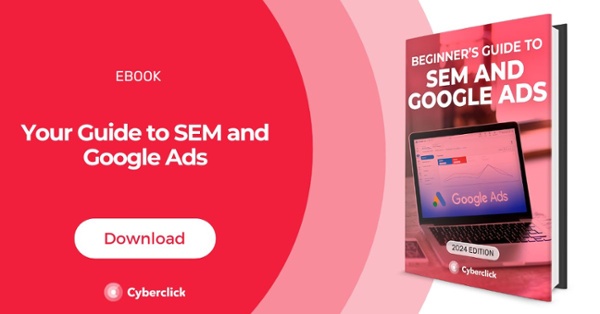Google PageRank has been a cornerstone of how websites appear in search results for over two decades. While the algorithm is no longer displayed publicly, it continues to influence how SEO strategies are built today, especially as search engines combine PageRank with hundreds of other signals to determine which pages rise to the top.
Understanding PageRank is less about chasing an elusive score and more about recognizing how link authority, backlinks, and overall online visibility shape your brand’s presence. By revisiting this foundational concept, you’ll gain clarity on how search engines evaluate content, where PageRank still matters, and how to build an up-to-date strategy that drives results.

How PageRank Works
At its core, PageRank is a system for measuring the importance of web pages based on their inbound links. Each hyperlink is treated as a vote of confidence, but not all votes are equal. Links from authoritative sites with higher domain authority pass more value than links from less reputable pages.
The formula created by Google co-founders Larry Page and Sergey Brin assigns a probability score that reflects how likely a user is to land on a page by randomly clicking through links. This concept evolved into a way of ranking results, so now pages with more high-quality backlinks tend to rise higher in search engine results because they are perceived as more trustworthy and relevant.
Over time, Google refined the system to prevent manipulation. Practices such as excessive link exchanges or low-quality directory submissions once boosted rankings but are now penalized. Today, PageRank is combined with hundreds of other algorithm signals, including content quality, organic search performance, and user behavior metrics, to deliver the most relevant results.
Historical Context and Relevance Now
When Google PageRank launched in the late 1990s, it revolutionized website ranking by evaluating the strength of incoming links rather than relying solely on keywords or metadata, quickly helping Google become the dominant search engine.
While PageRank scores were once publicly visible through the Google Toolbar, encouraging marketers to optimize backlinks for higher scores, Google eventually retired public access to discourage manipulation. Today, PageRank still operates behind the scenes as part of Google’s ranking system, integrated with factors like content relevance, page speed, mobile usability, and AI-driven SEO, with its core principles—link quality, relevance, and authority—continuing to guide how sites compete in organic search.
Is Google PageRank Calculated on a Scale?
In practice, PageRank is not a simple linear scale. The algorithm distributes authority logarithmically, meaning that moving from a score of 3 to 4 is far easier than moving from 8 to 9. This is why highly authoritative websites with strong link authority and established reputations are so difficult to outrank.
Today, Google no longer publishes PageRank scores, but it continues to use link analysis as part of its broader algorithm. Many SEO tools attempt to approximate it with their own versions, such as “domain authority” or “page authority.” While these metrics are not identical to PageRank, they provide a way to measure how well a website might perform in search engine rankings relative to competitors.
What Is a Good PageRank Score?
Since Google no longer publishes official PageRank values, there is no definitive “good” score today. Instead, marketers rely on third-party metrics like domain authority or page authority to estimate how search engines might view a site’s trustworthiness and relevance.
A strong PageRank comes from a combination of factors:
- Quality backlinks. Links from reputable, topic-relevant sites carry more weight than a high volume of weak links.
- Balanced backlink strategy. A mix of different referring domains, not just multiple links from the same site, signals a healthier profile.
- Natural growth. Consistent acquisition of backlinks over time is viewed more positively than sudden spikes, which may indicate manipulation.
- Relevance: Links embedded in meaningful content are stronger than those from unrelated or low-value sources.
Instead of aiming for a specific number, it’s more practical to benchmark your website’s authority against competitors in your industry. If your website ranking metrics are stronger than those of your peers, you’re positioned well for online visibility in organic search.
Advantages and Disadvantages of PageRank
PageRank was groundbreaking because it shifted focus from keyword density to the value of links, setting a new standard for how websites are ranked. Even though it is no longer visible, its legacy continues to shape SEO practices. Understanding its strengths and weaknesses helps marketers use it effectively as part of a broader strategy.
Advantages of PageRank
- Clear measure of authority: By valuing backlinks, PageRank introduced a way to differentiate credible websites from low-quality ones.
- Focus on relevance: It encouraged brands to build links from trusted, topic-related sources rather than relying only on keyword placement.
- Foundation for modern SEO tools: Metrics like domain authority, citation flow, or trust flow are all inspired by PageRank’s logic.
Disadvantages of PageRank
- Vulnerability to manipulation: In its early years, practices like link farms and paid links distorted rankings.
- Limited scope: PageRank alone doesn’t consider content quality, user experience, or other signals critical for organic search.
- Lack of transparency: With Google no longer sharing scores, marketers must rely on third-party proxies, which are approximations at best.
Ultimately, PageRank should be viewed as one piece of a larger puzzle. Modern backlink audits, technical optimization, and content strategies all play a role in improving performance across search results.
How to Check if Your Website Pages Are Being Indexed
While you can’t see your PageRank score anymore, you can still monitor whether your web pages are being indexed and recognized by Google. Indexing is the first step in achieving visibility because if your pages aren’t in the search engine’s database, they can’t benefit from PageRank or appear in results.
There are several practical ways to check indexing:
- Use the “site:” operator in Google. Typing site:yourdomain.com into the search bar shows which of your pages are currently indexed.
- Google Search Console. This free tool provides detailed indexing reports, alerts for issues, and insights into your site’s organic search performance.
- Third-party tools. Platforms like SEMrush or Ahrefs can estimate crawl coverage and flag problems with duplicate content, broken links, or slow-loading pages that may affect indexation.
Making sure that your pages are indexed also requires proactive steps, including creating high-quality, crawlable content, building trustworthy backlinks, and avoiding technical errors that block search engine crawlers. Regular backlink audits can help verify that links pointing to your site remain healthy and aren’t dragging down your authority.
Indexing is where visibility begins. From there, strategies like local SEO, SEO inbound marketing, and even multichannel marketing contribute to stronger rankings and broader reach.
Responsable de la estrategia de contenidos y visibilidad en Cyberclick, con enfoque Allbound y especialización en posicionamiento SEO, GEO y automatización con IA. Gestión avanzada del CRM con HubSpot: base de datos, workflows, lead nurturing, scoring y reporting. Experiencia en marketing digital, comunicación corporativa y periodismo, uniendo estrategia, creatividad y tecnología para captar y convertir leads cualificados.
Responsible for content and brand visibility strategy at Cyberclick, with an Allbound approach and specialization in SEO, GEO (Generative Engine Optimization), and AI-powered automation. Advanced HubSpot CRM management: database segmentation, workflows, lead nurturing, scoring, and reporting. Background in digital marketing, corporate communications, and journalism—combining strategy, creativity, and technology to attract and convert qualified leads.



%20in%20SEO.webp)


Leave your comment and join the conversation